Canberra kids have a new place to play in the national capital. And read. And rest. Discover Australian history. And have a lot of fun.
The new $9 million Tim and Gina Fairfax Discovery Centre officially opens at the National Museum of Australia on Thursday.
It is a new curated space in which children aged 0-6 years can explore Australian history through storytelling and play, building, it's hoped, a lifelong love of museums in the process.
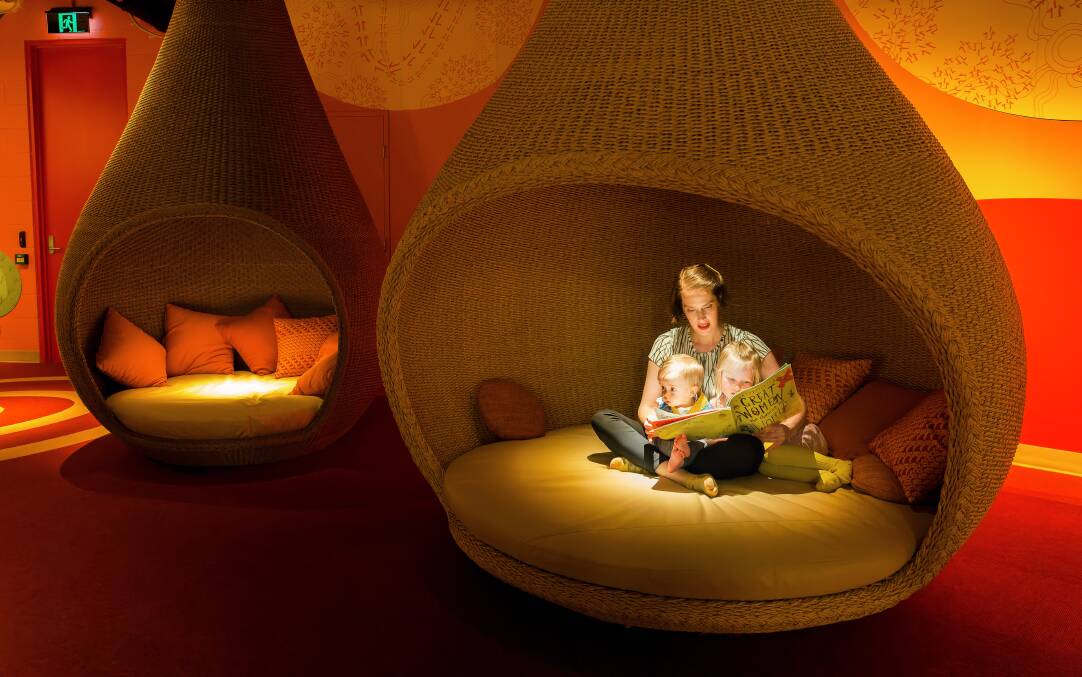
A mysterious bunyip, the world's woolliest sheep, and a boy from the Torres Strait who became a dugong are some of the intriguing characters who feature in the new centre.
Australian philanthropists Tim and Gina Fairfax donated money towards the development of the new dedicated children's play and education space.
Parents and kids have been road-testing the space for some months and given it the thumbs-up.
Canberra mum Hannah Richardson said the Discovery Centre was already her new favourite place to bring children Elowen Asmus, four, and Cormac Asmus, one.
"We've loved coming here. It's an absolute gem to discover," she said.

"What I really like about it is that children can learn about our history and connect to our history through play.
"And when you're a mum you just know how important play is for their development. And they love it."
The specially-curated play area includes soft crawl space for babies and five other separate spaces featuring Australian animal stories about everything from Chris the sheep, the world's wooliest sheep who was found wandering a Canberra paddock in 2015, to the legend of Gelam, the boy from the Torres Strait who became a dugong.
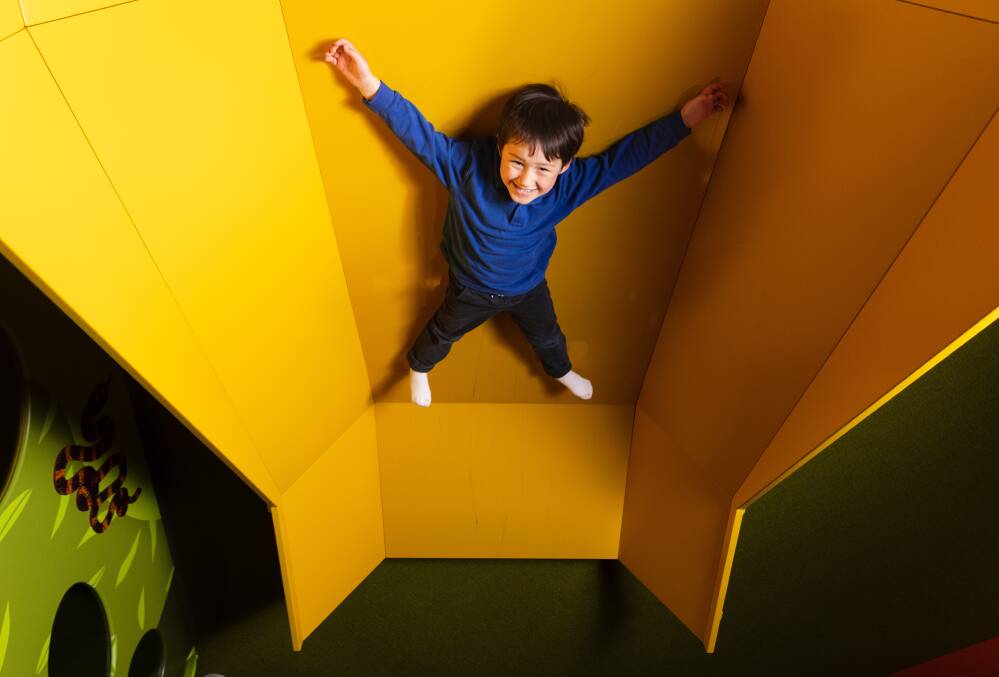
The play areas include dress-ups, areas to slip and slide and run, a netted climbing frame and tunnel that evokes the journey of Trim the Cat who sailed on the HMS Investigator with Matthew Flinders. Elsewhere beautiful fish "swim" on the floor as children are encouraged to arrange toy rocks and trap them in the way Gelam may have done.
The Discovery Centre is a dream come true for lead curator on the project, Jono Lineen, who helped to bring it life.
Mr Lineen said there had not been a play area at the museum for more than a decade, after the former area was subsumed by a new display.
The Discovery Centre has been created in an area of the museum that used to include a filing section for the institution.
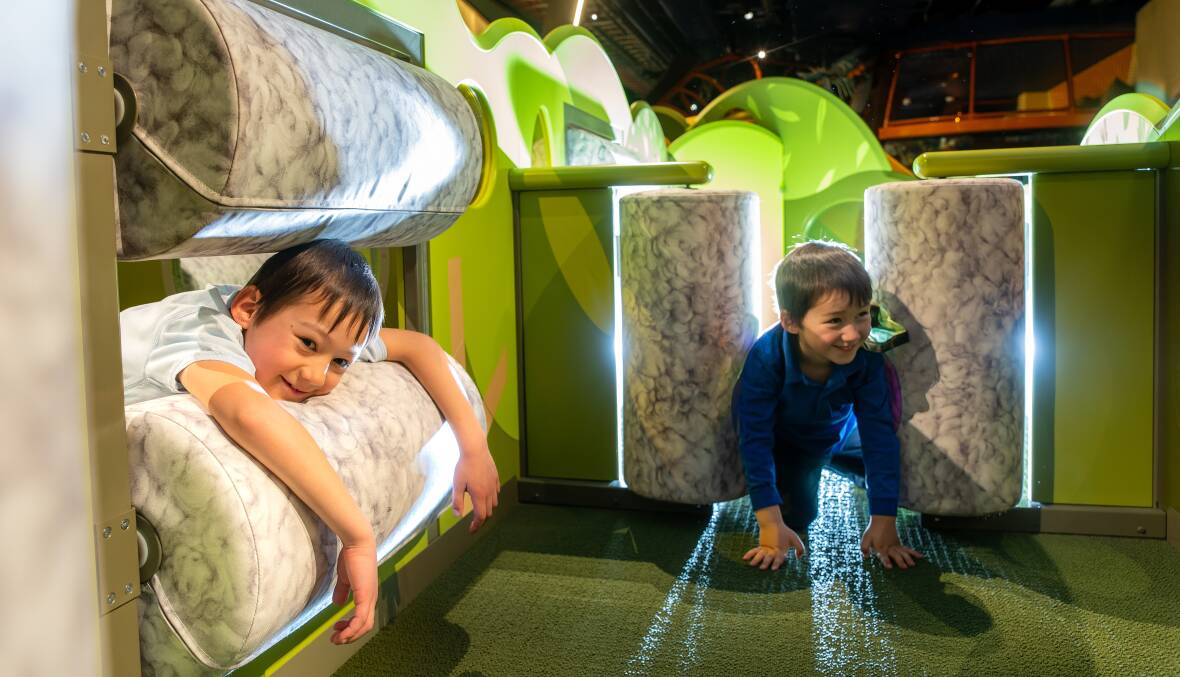
The old space was transformed by Arterial, a design, interactivity, and technology company. The overarching framework for the design of the play space was "a deconstructed 18th century sloop, inspired by Matthew Flinders circumnavigation of Australia in HMS Investigator. This "ship" inhabits the entire play space using architectural ribs, portholes and climbing structures.
"We've been working on this for five years," Mr Lineen said.
"And the end result is fantastic."
Mr Lineen said it was important to create a fun and engaging space for babies and young children at the museum.

"Back in the day we had a really cool play area where Landmarks is now and that came out in 2009 when we redeveloped the area. So from 2009 until now, we haven't had a play area for kids of that age," he said.
"And there were a lot of families who used that space. I know I did. I used to bring my kids there three, four times a week. It's actually the reason I work here. I came here so much.
"I applied for a job as a host and 10 years later, here I am as a curator, looking after the space that brought me to this place. "
Mr Lineen said the museum received funding for the space in 2017 and had been working to bring it to fruition ever since, including observing for months how kids played.
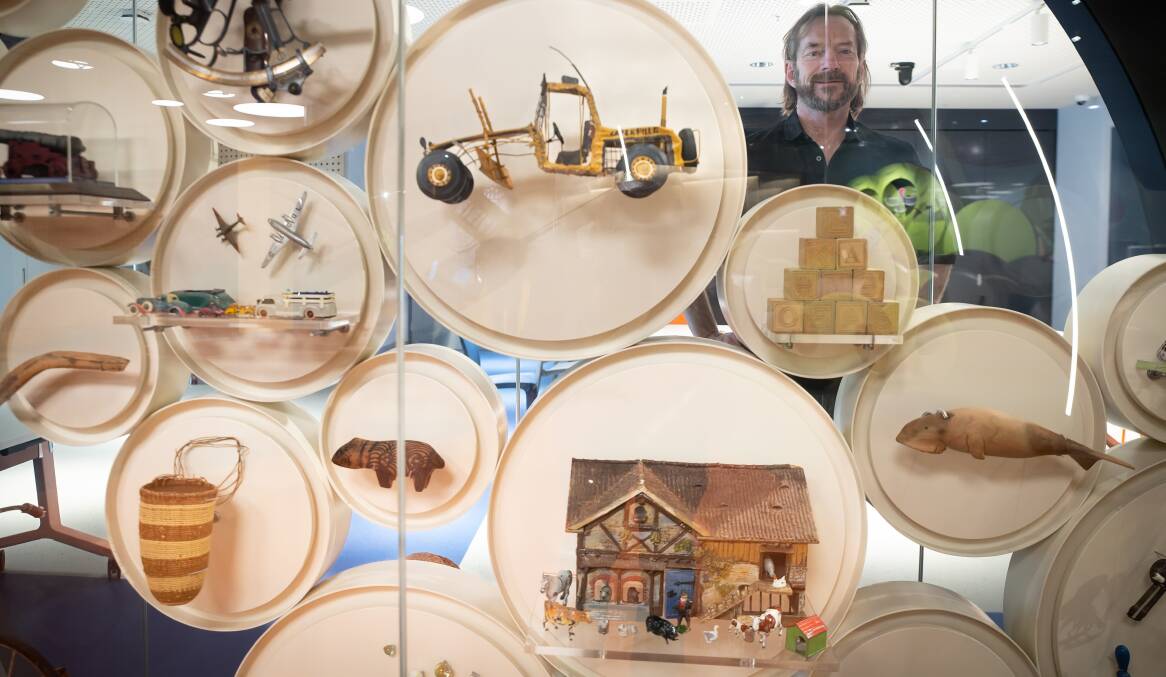
"The key driver to getting the structure for what this place was going to be came from our education department and I asked them, 'What do kids like in museums?' And straight away, they said, 'Animals'," he said.
"And that was it. We had to structure this space in a way that told Australian animal stories in very Australian landscapes. Of course, we had hundreds of stories we could play with. A lot of consultation went into this - there were seven different periods of consultation with parents and children - and these were the five stories that people really liked."
The play area also includes a display of almost 150 objects from the National Historical Collection, including toys.
"These objects, the purpose around them, really, is to engage kids in the stories," Mr Lineen said.

"So these objects are either related to the stories. Or they're objects that represent connections between museums and kids. So the idea of collecting. That's what we do as a museum. So collections of spoons. Collections of LEGO. Collections of antique toy cars. The idea of creativity. Kids are naturally creative and museums have to display their collections in creative ways.
"And there are also objects that represent change, because kids are immersed in change. And the beautiful thing about that is a lot of these objects - a record player or a fold-up camera - a lot of kids wouldn't even have ever seen those before. For the grandparents who come in they can say, 'What do you think of that?' And that's a way to engage in conversation.
"It's like, 'What does history mean to you?' History is here. It's in these stories."
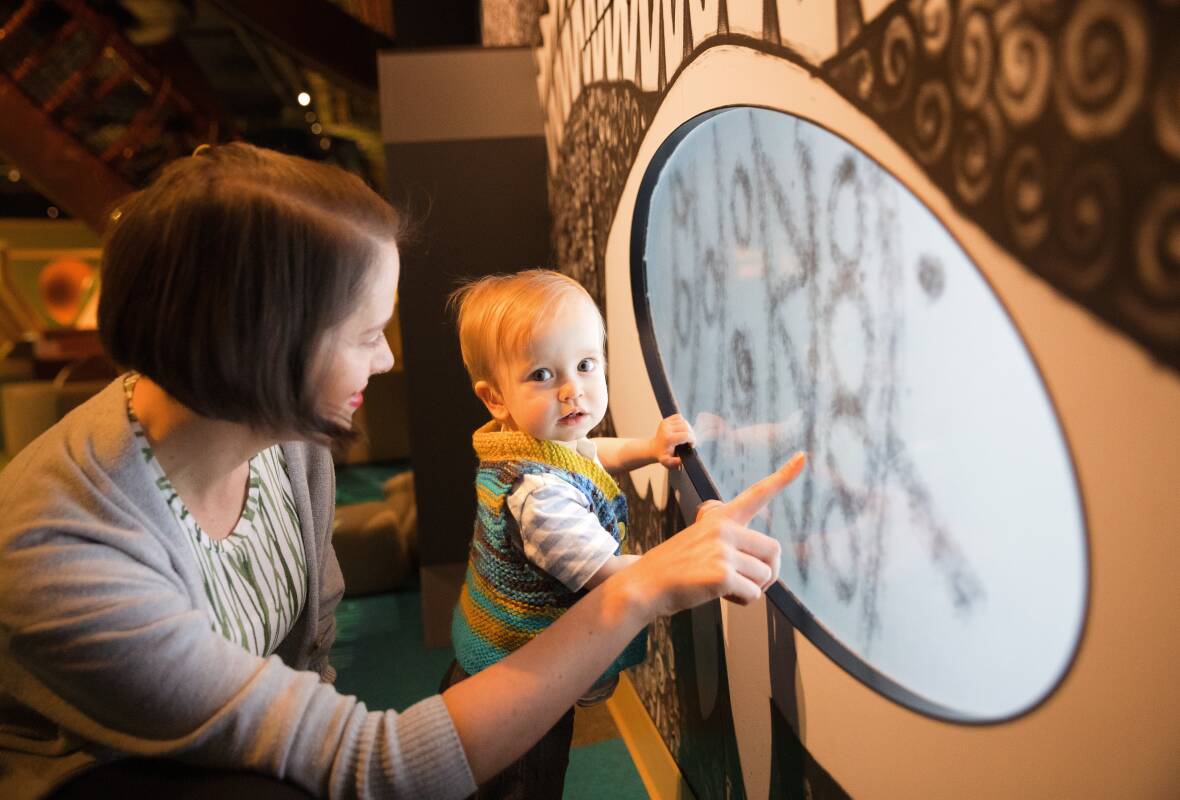
Those stories were:
Wambuwuny: The next story takes place on the great Australian grasslands, where visitors meet Wambuwuny, the grey kangaroo, and hear the Wiradjuri tale of how she got her pouch. This is a quiet area where kids can listen to the story of Wambuwuny inside one of three relaxing pods designed to mimic a kangaroo's pouch.
Chris the Sheep: Young visitors arrive in the bush to meet Chris, a record-breaking sheep, and learn how he strayed from his flock, grew the biggest fleece in history and became famous all over the world. Chris's space is an active area where kids can follow a labyrinth designed around a sheep pen and learn about mustering and how wool becomes our clothes.

Gelam: From the bush, the adventurers move into the reefs and lagoons of the Torres Strait. Here kids can discover the story of Gelam, the boy who became a dugong, swam the breadth of the strait and transformed into many of the features that make up the islands today. In this area they can arrange stones in the lagoon to create an Indigenous fish trap or gather and group shells in the way that Torres Strait Island kids do on Erub Island.
Trim the Cat: Next up children can learn about Trim, the first cat to circumnavigate Australia - between 1801 and 1803 when he travelled with Captain Matthew Flinders. In this active space they'll climb through the ships netting, turn the vessel's wheel, look through a telescope and experience what Trim may have felt while sailing on the HMS Investigator. Within the netting structure there are quiet areas for kids to rest and relax.
Bunyip: From the sea, visitors move to the billabong where they meet the mysterious bunyip. There they can dance and dress up and are encouraged to act out the story of Australia's most famous mythical creature. This is an active area where kids are surrounded by projections and the many sounds of the billabong.







